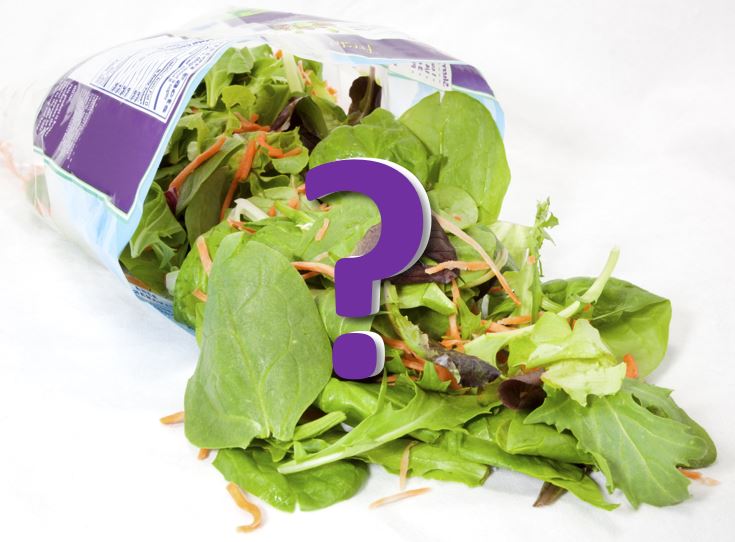When it comes to the freshness of bagged salads, vegetables or meal kits, you need to ask, “What’s in the bag?”
Many bagged salads or meal packages will have a “Use By” date but these dates are only guidelines and aren’t reliable or accurate. Why? Not all product harvested on the same day – even from the same field – will have the same freshness or remaining shelf-life. Variations in harvest conditions and processing can cause significant differences in shelf-life meaning the “Use By” date is only an estimate and can vary from the actual freshness by a matter of several days. For example, strawberries left at field temperature for just an hour can lose a full day of shelf-life compared to those that are quickly precooled. That doesn’t mean the strawberries are bad. It just means that you need to manage for these variations in freshness.
What makes bagged salads or meal kits more challenging is that they often contain multiple products from multiple sources. A salad kit may have butter and iceberg lettuce, cabbage, carrots and other ingredients. Carrots have a relatively long shelf-life but what about the lettuce? Let’s say the iceberg lettuce in the bag has six days of remaining shelf life but the butter lettuce has only three days left. That means the shelf-life of the bag is only three days – the length of time of the “weakest” ingredient in terms of freshness. Once that butter lettuce “fails”, the retailer or consumer will throw it out, even if the other ingredients are still fresh. That increases shrink and waste, and reduces product margins.
Another challenge with these products is traceability, as multiple products from multiple growers or locations may be mixed into a bag of salad mix or into a meal kit. In the event of a contamination or recall, it can be extremely difficult to find the source of the problem, as we’re witnessing with the recent romaine lettuce issue.
To address freshness and track-and-trace for fresh foods, it’s important to monitor and manage product at the pallet level from the time it’s harvested through packing, processing and distribution to the retailer. Technologies like cloud-based predictive analytics systems and autonomous IoT monitors can autonomously collect data about the location and condition of products as they move from the field. Using predictive analytics and freshness algorithms, processors can know the dynamic freshness of each component ingredient before it goes into the salad mix or meal kit. This not only helps with traceability, but it also means that all the ingredients can have comparable and appropriate freshness. In cases where the remaining shelf-life is impacted or limited, that product could be redirected for faster consumption by sending it to a food service provider or restaurant where the product will be consumed within one-to-two days.
It’s a smart way to reduce food waste, improve delivered freshness and help with food safety. Zest Fresh can help. Click here to learn how.


